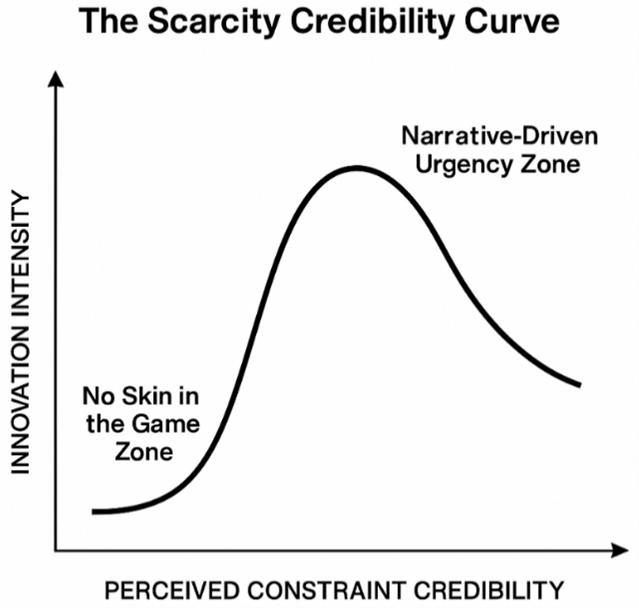
Asia Pacific Academy of Science Pte. Ltd. (APACSCI) specializes in international journal publishing. APACSCI adopts the open access publishing model and provides an important communication bridge for academic groups whose interest fields include engineering, technology, medicine, computer, mathematics, agriculture and forestry, and environment.


Overcoming the problems facing cassava processing industry in Nigeria
Vol 1, Issue 1, 2024
Download PDF
Abstract
This paper takes a look at overcoming the problems faced by processors of cassava in Nigeria and how important the processing of cassava is to the Nigerian economy. The importance of the cassava processing industry cannot be overemphasized. Apart from providing food security, provision of employment opportunities for the ever-teeming population, it serves as a foreign exchange earner to boost the economy and provide raw materials for industries such as textile, pharmaceutical and alcohol. The roots and leaves of cassava are also source of medicine, it is also used in the production of biofuel. The paper also looked at the myriad of problems associated with the processing operations and delved into the challenges of the cassava processing industry which includes: a lack of basic infrastructural facilities, lack of access to finance the industry, excessive cost of processing equipment, poor market accessibility and limited government support. The paper proffer solutions as ways forward in taking the cassava processing industry in Nigeria to the next level.
Keywords
References
1. Kochlar SL. Tropical Crops: A Textbook of Economic Botany. Macmillan Publishers Ltd.; 1981. 467p.
2. Kordylas JM. Processing and Preservation of Tropical and Sub-Tropical Foods. Macmillan Education Ltd.; 2002.
3. Sanginga N. Root and Tuber Crops (Cassava, Yam, Potato and Sweet Potato). United Nations Economic Commission for Africa; 2015.
4. Agodzo SK, Owusu FA. Crop coefficient determination of a six-month variety cassava. Journal of Agricultural Engineering and Technology. 2002; 10: 1-6.
5. Ikuomenisan OE. Design and Construction of Cassava Chip Dryer. University of Ilorin, Ilorin, Nigeria; 2001; Unpublished project report.
6. Quaye W, Gayin J, Yawson I, Plahar WA. Characteristics of various cassava processing methods and the adoption requirements in Ghana. Journal of Root Crops. 2009; 35(1): 59-68.
7. Adetunji OR, Quadri AH. Design and fabrication of an improved cassava grater. The Pacific Journal of Science and Technology. 2011; 12(2): 120-129.
8. Ojo OI, Olawale SO. Assessmen of weather variability impact on cassava yield in south western Nigeria. LAUTECH Journal of Engineering and Technology. 2014; 8(2): 169-175.
9. Adetan DA, Adekoya LO, Aluko OB. Characterisation of some properties of cassava root tubers. Journal of Food Engineering. 2003; 59(4): 349-353. doi: 10.1016/S0260-8774(02)00493-4
10. Agbetoye LAS. Improving the technology of cassava harvesting and processing mechanization for food security in Nigeria. In: Proceedings of the International Conference on Science and Technology; 14-19 August 2005; Akure, Nigeria. pp. 196-204.
11. Samaila SR, Ogunjirin OA, Olowonibi MM. Development and performance evaluation of motorized cassava mash sifter. Journal of Agricultural Engineering and Technology. 2010; 18(2): 46-54.
12. Chandrasekara A, Josheph Kumar T. Roots and Tuber Crops as Functional Foods: A Review on Phytochemical Constituents and Their Potential Health Benefits. International Journal of Food Science. 2016; 2016: 1-15. doi: 10.1155/2016/3631647
13. Prochnik S, Marri PR, Desany B, et al. The Cassava Genome: Current Progress, Future Directions. Tropical Plant Biology. 2012; 5(1): 88-94. doi: 10.1007/s12042-011-9088-z
14. Abass AB, Onabolu AO, Bokanga M. Impact of the high quality cassava flour technology in Nigeria. In: Akoroda MO, Ngve JM (editors). Root Crops in the 21st Century, Proceedings of the 7th Triennial Symposium of the International Society for Tropical Root Crops—Africa Branch (ISTRC-AB); 11-17 October 1998; Cotonou, Benin.
15. Aniedi OE, Linus OA, Ime AE, Benjamine RE. Mechanization of cassava peeling. Research Journal in Engineering and Applied Sciences. 2012; 1(5): 334-337.
16. Echebiri RN, Edaba MEI. Production and utilization of cassava in Nigeria: Prospects for food security and infant nutrition. Production Agricultural Technology. 2008; 4(1): 38-52.
17. Grace MR. Development of the cassava-processing industry and its future. In: Cassava Processing. FAO; 2007. pp. 330-338.
18. Ilori OO, Adetan DA. A study of the peel penetration pressure of two cassava varieties. Middle-East Journal of Scientific Research 2013; 16(6): 884–889. doi: 10.5829/idosi.mejsr.2013.16.06.11855
19. Kamal AR, Oyelade OA. Present status of cassava peeling in Nigeria. Journal of Agricultural Engineering and Technology. 2010; 18(2): 7-13.
20. Ugwu KC, Ozioko RE. Development and performance test of cassava peeling and mashing machine. International Journal of Scientific and Engineering Research. 2015; 6(6): 1572-1579.
21. Kolawole OP, Agbetoye LAS, Ogunlowo AS. Evaluation of cassava mash dewatering methods. Journal of Bio-informatics and Sequence Analysis. 2011; 3(2): 23-30.
22. Igbeka JC. Mechanization of tuber (cassava) peeling. In: Proceedings of the International Symposium on Mechanization of Harvesting and Subsequent Processing of Agricultural Products in Tropical Africa and the Manufacturing of Relevant Agricultural Implements; 1985; Yaounde, Cameroon. pp. 410-422.
23. Oriola KO, Raji AO. Trends at mechanizing cassava postharvest processing operations. International Journal of Engineering and Technology. 2013; 3(9): 879-887.
24. Jimoh MO, Olukunle OJ, Manuwa SI, et al. Theoretical analysis of tuber movement during mechanical peeling of cassava. IOSR Journal of Mechanical and Civil Engineering. 2014; 11(6): 27-36. doi: 10.9790/1684-11612736
25. Kolawole PO, Agbetoye L, Ogunlowo SA. Sustaining World Food Security with Improved Cassava Processing Technology: The Nigeria Experience. Sustainability. 2010; 2(12): 3681-3694. doi: 10.3390/su2123681
26. Kolawole OP, Agbetoye LAS, Ogunlowo AS. Cassava Mash Dewatering Parameters. International Journal of Food Engineering. 2007; 3(1). doi: 10.2202/1556-3758.1088
27. NNMS. Report on the Execution of NCAM National Mechanization Survey of Tractors and Implements, Agro Processing Equipment and Fabricators in 36 States and FCT of Nigeria. NNMS; 2020. pp. 312-380.
28. Ejovo N. Ohwovoriole, Sunday Oboli, A. C. C. Mgbeke. Studies and Preliminary Design for a Cassava Tuber Peeling Machine. Transactions of the ASAE. 1988; 31(2): 0380-0385. doi: 10.13031/2013.30718
29. Adetan DA, Adekoya LO, Aluko OB. Theory of mechanical method of peeling cassava tubers with knives. International Agrophysics. 20(4): 269-276.
30. Adetola OA. Influence of physical properties of cassava tubers on the performance of an automated cassava peeler. ABUAD Journal of Engineering Research and Development. 2020; 3(1): 8-22.
31. Nathan C, Wadai J, Haruna IU. Comparative analysis of type 3 and type 4 cassava peeling machines. Nigerian Journal of Technology. 2018; 36(4): 1088. doi: 10.4314/njt.v36i4.14
32. Oluwole OO, Adio MA. Design and construction of a batch cassava peeling machine. Journal of Mechanical Engineering and Automation. 2013; 3(1): 16-21. doi: 10.5923/j.jmea.20130301.03
Supporting Agencies
Copyright (c) 2024 Lois Omolola Abiodun, Opeyemi Adeniyi Oyelade, Yinka Segun Ademiluyi, Olusola Adetola Ogunjirin, Jelili Aremu Oyedokun

This work is licensed under a Creative Commons Attribution 4.0 International License.

This site is licensed under a Creative Commons Attribution 4.0 International License (CC BY 4.0).

Macau University of Science and Technology, Macau




.jpg)
.jpg)
